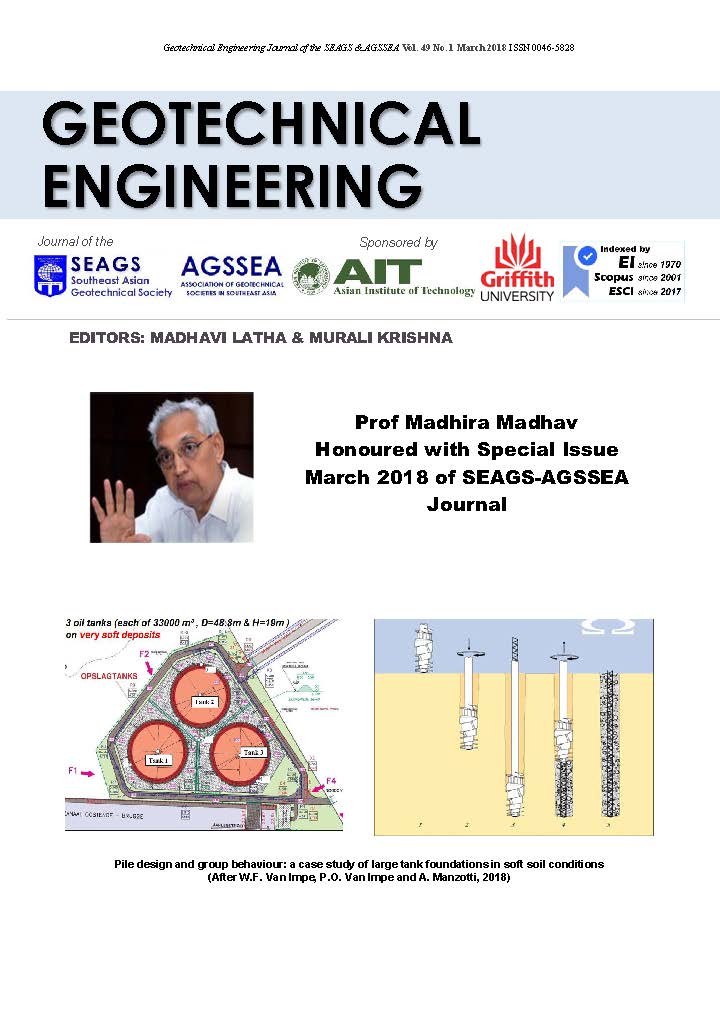Biogeotechnological Methods for Mitigation of Liquefaction
Main Article Content
Abstract
Liquefaction of granular soils during earthquake has long been identified as one of the major geohazards. Conventional soil improvement methods for mitigating liquefaction such as dynamic compaction or deep mixing are costly for large-scale applications. Recently some biological processes have shown significant influence on both the physical and chemical performance of geotechnical systems. Two types of biogeotechnological methods, biocementation and biogas desaturation, have been experimentally examined in this study. For the former, a microbial induced carbonate precipitation (MICP) process has turned one cubic meter of loose sand into sandstone-like material. The shear strength of the sand is greatly improved whereas the permeability is reduced at the same time. For the later, tiny inert gas bubbles are generated microbiologically within liquefaction prone ground to increase the resistance of sand to liquefaction. A series of shaking table model tests on biogas treated sand have demonstrated that this biogas desaturation method is effective for reducing pore pressure generation and shaking induced settlement during cyclic loading. When the degree of saturation of the soil is controlled to be around 90%, the generation of pore pressure in sand and the potential for liquefaction could be largely contained.
Article Details

This work is licensed under a Creative Commons Attribution-NonCommercial-NoDerivatives 4.0 International License.
Copyright © 2019 Association of Geotechnical Societies in Southeast Asia (AGSSEA) - Southeast Asian Geotechnical Society (SEAGS).


